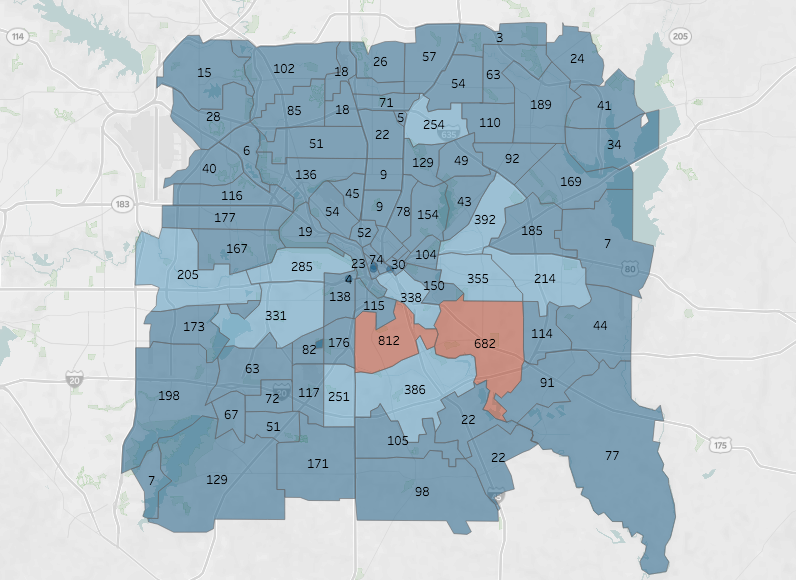ZIP codes in South Oak Cliff and neighboring Pleasant Grove have the most incarcerated residents of any ZIP codes in Texas, according to a new analysis. Overall, seven of Texas’ 30 highest inmate ZIP codes sit within Dallas ISD’s boundaries. The Commit Partnership brings us the disheartening data points through an analysis of newly released statistics from the Texas Department of Criminal Justice.
Eight hundred and twelve inmates called South Oak Cliff’s 75216 home prior to incarceration, about 2.2 percent of the total population there. Another 682 people from Pleasant Grove’s 75217 are imprisoned—1.22 percent. The sheer numbers are lower but rates higher still in the 75215 (2.8 percent) and 75210 (2.6 percent) ZIP codes of South Dallas.
In a letter penned yesterday, Commit CEO Todd Williams called for a sense of urgency in Dallas’ response to the data. Here is Williams:
This data is not a judgment on the residents of these neighborhoods. Instead, it is the compelling voice of our neighbors highlighting the stark impact of what decades of systemic inequities can collectively create. These include the unequal provision of school funding and city services; discriminatory mortgage and small business lending; the inequitable distribution of effective teachers; the lack of equal access to quality affordable childcare, healthy food, recreation centers, libraries, internet, public transportation… the list goes on and on.
Education and incarceration have, sadly, become inextricably linked. Children of incarcerated parents are more likely to experience financial instability, social stigma, and post-traumatic stress, and these Adverse Childhood Experiences (or ACEs) are, in turn, linked to lower educational attainment. Moreover, high school and postsecondary graduation rates have been shown to directly impact crime rates. When you combine this data with the recent data produced about the concentration of poor health outcomes in these exact same zip codes, you quickly get the sense that a child’s chance for life success, if born within certain Dallas communities, is incredibly impaired through no fault of their own.
This is how we end up with maps like this that speak to how tightly a child’s outlook is tied to his or her neighborhood.
Add to Williams’ points the problems of over-policing in certain neighborhoods and a justice system that has too often been less willing to give second chances to black and brown individuals.
“Our educational outcomes, upon which a still-expanding labor market is increasingly reliant, are the result of a constellation of issues, including criminal justice reform, that have to be attacked holistically if we want to succeed,” writes Williams.
We still have a long way to go.
Explore Commit’s analysis here.





